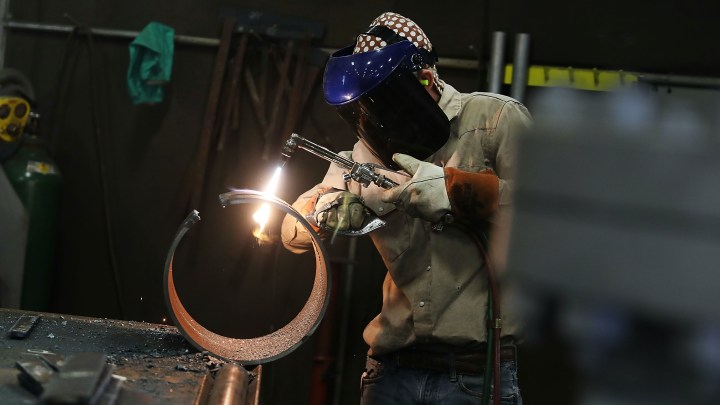
Manufacturers seeking workers face competition for talent and an image problem
Manufacturers seeking workers face competition for talent and an image problem

One of the ironies of the pandemic is that with so many people unemployed, a lot of employers say they are having trouble finding people to work. This is especially true in manufacturing, where only 60% of the jobs lost in the pandemic have been recouped, according to a new report from Deloitte and The Manufacturing Institute. And it’s not for lack of trying on the part of manufacturers.
Chart Industries, for example, is hiring. Gerry Vinci, in charge of human resources for the company, said, “If there are people out there that are looking for welding jobs or engineering jobs, they are available at Chart.”
The company makes equipment for superlow-temperature industrial operations like purifying gas. Hiring has been hard, Vinci said: “With respect to welders, right, we’ve done all kinds of outreach, we’ve done in-house training programs. You’re competing with many other companies.”
Competition has gone beyond offering higher pay and now includes things like workplace culture and inclusiveness. Manufacturing is one of the industries that had to ramp up during the pandemic, so there’s more intense competition for certain types of workers. But there’s an issue beyond the pandemic: image.
Carolyn Lee is executive director of The Manufacturing Institute, which, along with Deloitte, produced the report on the hiring challenge. “If we go out and we do research on what do people think of manufacturing, they draw smokestacks,” she said. “And they draw the assembly line from the ’50s, the ’60s, ’70s, ’80s.”
But, Lee said, “what manufacturing really is today, when we go to factories you see highly technologically driven, clean, bright environments. You can have multiple careers and different jobs.”
It’s an important time for manufacturers in the U.S. to think long-term, according to Daniel Zhao a senior economist at Glassdoor. “The manufacturing workforce is aging,” he said. “There are a lot of workers who are retiring, and it’s important for the industry to make sure there’s a pipeline of talent.”
Deloitte underscored the problem with data: “Left unabated, this persistent skills gap in manufacturing has significant implications for the U.S. economy, ongoing recovery and the nation’s global competitiveness. The study estimates 2.1 million manufacturing jobs could go unfilled in the U.S. by 2030, costing the U.S. economy as much as $1 trillion in 2030 alone.”
Industry experts said it will take everything from more apprenticeships to immigration reform to get enough workers to fill those open positions.
There’s a lot happening in the world. Through it all, Marketplace is here for you.
You rely on Marketplace to break down the world’s events and tell you how it affects you in a fact-based, approachable way. We rely on your financial support to keep making that possible.
Your donation today powers the independent journalism that you rely on. For just $5/month, you can help sustain Marketplace so we can keep reporting on the things that matter to you.











